The Coway Airmega 300S is an air purifier that we have been eager to review. The makers of the Airmega series of purifiers consistently receive high marks for quality and reliability and so we wanted to see for ourselves whether or not this simple boxed shaped purifier really is worth all of the hype. Here is what we found.
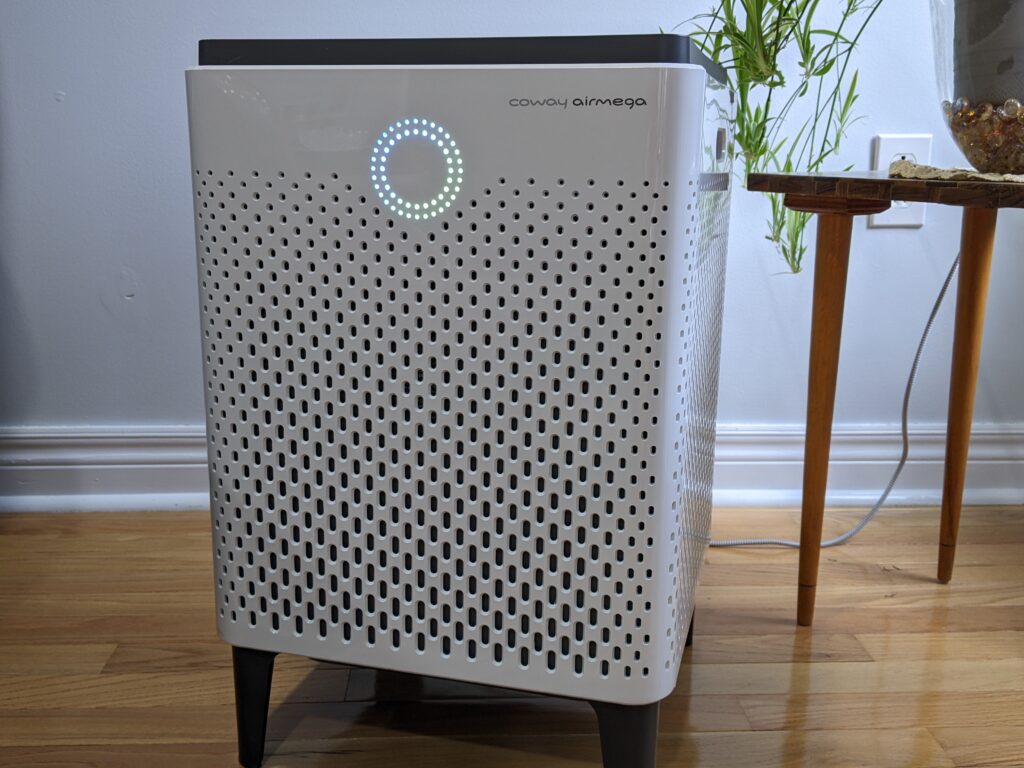
Design and durability
The Coway Airmega 300 line comes in two options – the Airmega 300 and Airmega 300S. The ‘S’ stands for ‘smart’ and so the Airmega 300S can be used with an app while the non-S version cannot – besides using the app, there is very little to distinguish the 300S from the 300.
The 300S is rectangular in shape and measures 20.1 inches high, 13.6 inches wide and 13.6 inches deep.
The purifier’s most striking feature is the air quality coloured ring on the front of the unit that displays the real time pollution level surrounding the 300S through a series of colour combinations.
While the purifier takes in air from two sides, the top side of the purifier has a large grill which expels processed air. Additionally, the top of the unit is where you will find the control panel.
There are three detachable panels, one on the front and one on the left and right sides. Removal of the panel infront reveals the purifier’s pollution sensor while detaching the side panels will give you access to the filters used by the Airmega 300S.
Not overlooking the details, Coway has equipped the 300S with a high-quality braided plug.
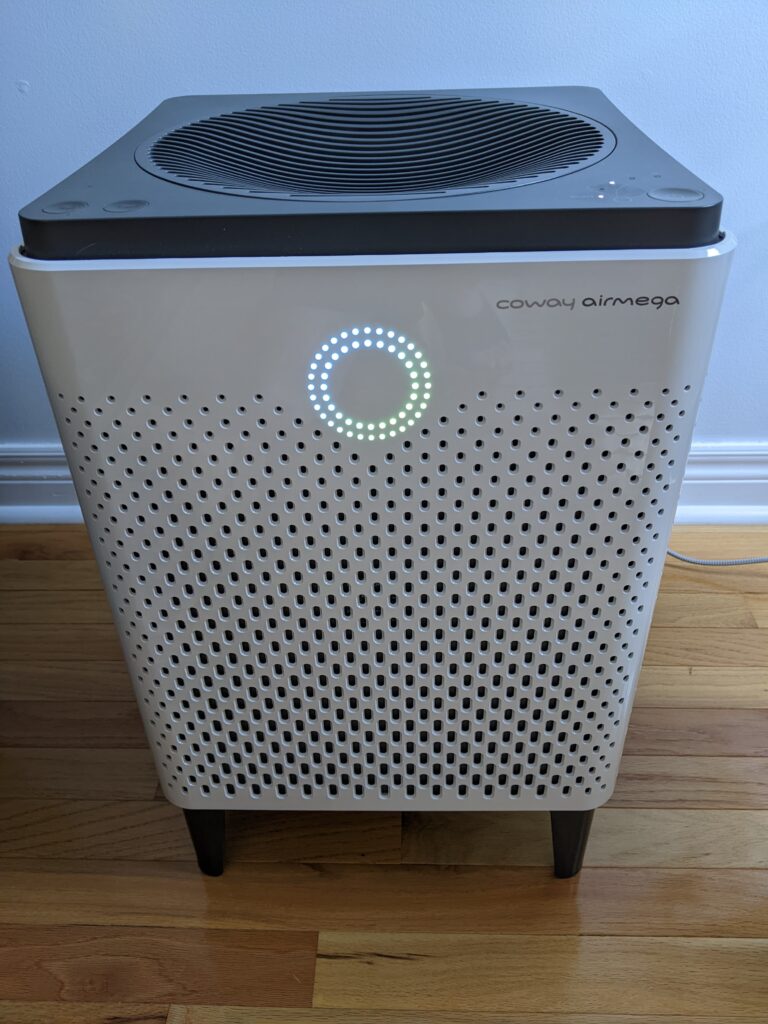
Filters
The air purifier comes equipped with washable pre-filters and Coway’s Max2 combination filters. Since the purifier takes in air from two sides, you receive two of each filter.
The Max2 filter is a combination filter which consists of an activated carbon filter on one side while on the other, there is a Green True HEPA H13 filter.
The two washable pre-filters are plastic and mesh filters designed to capture larger particles such as human hair, pet hair and dust. These pre-filters also serve as a shield for the Max2 combination filters, ensuring that the combination filter is not needlessly degraded by larger particles.
The activated carbon filters capture odors and harmful gases such as Volatile Organic Compounds (VOCs). Unlike lower quality filters which utilize a carbon sprayed filter, the Airmega 300S uses a carbon filters that are filled with carbon pellets. Each of the carbon filters holds 0.75 lbs of activated carbon pellets. These tiny pellets attract gases and odors effectively neutralizing them. According to Coway, each carbon filter can capture 99% of odors and harmful gases.
The Green True HEPA filters used by the Airmega 300S are True HEPA H13 filters capable of capturing up to 99.9% of harmful particles down to 0.1 microns, including allergens, dust, mold, bacteria and aerosolized viruses.
According to tests performed on the Coway Airmega 400 series of air purifiers, which are identical identical to the 300 series, but designed for larger spaces, the purifiers “effectively removed over 99.98% of the SARS-Cov-2 in two minutes”
The lifespan of the Max2 combination filter really depends on usage but typically can last between six and 12 months. Based on our usage we believe the combination filter would likely need to be changed on an annual basis.
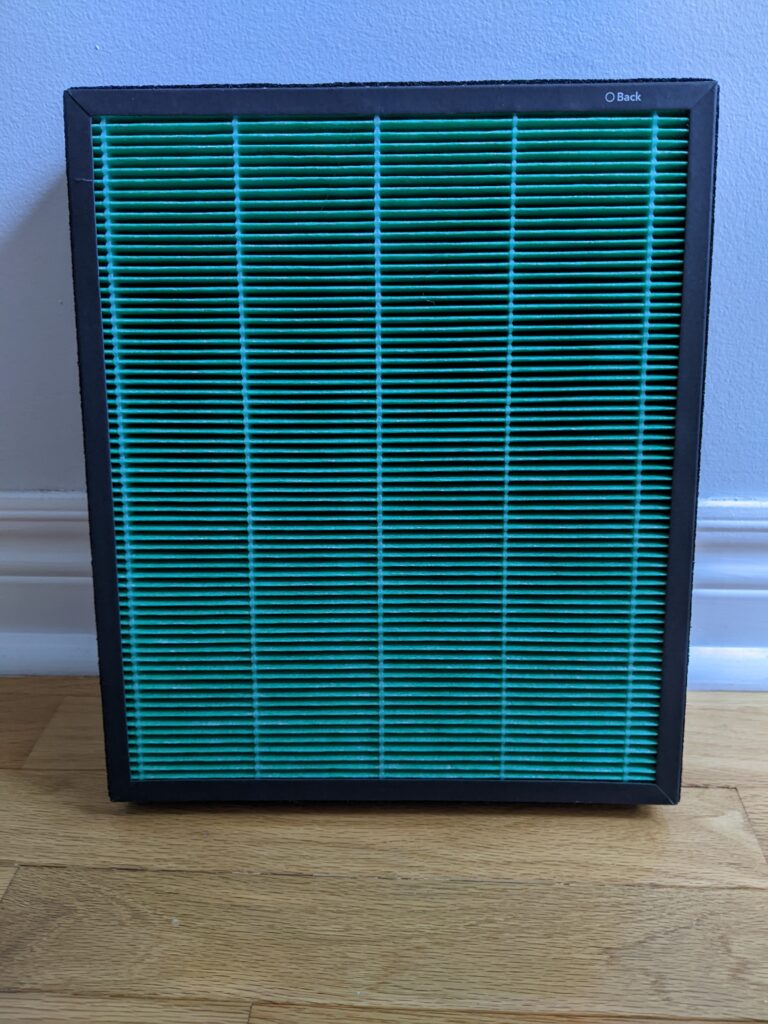
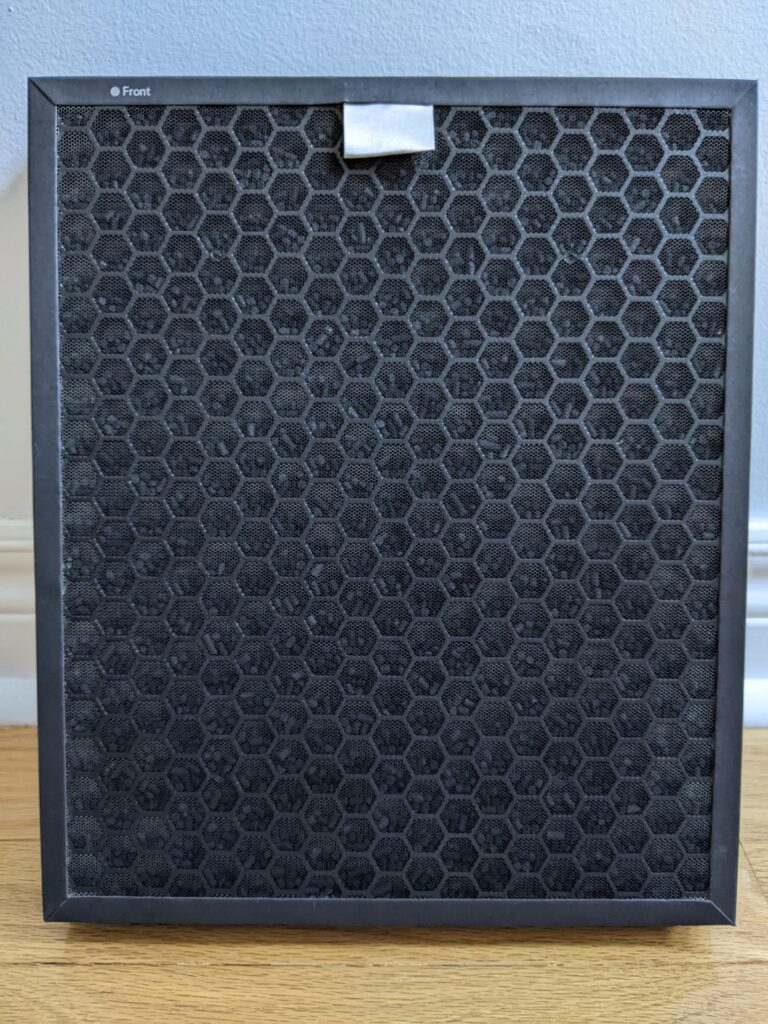

Air processing
The Coway Airmega 300S can process over 350 cubic feet of air per minute (CFM) which makes it a purifier that can be used both in small and large rooms.
The unit is able to completely filter all the air in a room sized 1256 square feet, twice per hour or a 628 square foot room, four times in an hour. Although impressive, it is worth noting that Coway and the body that measures the Clean Air Delivery Rate (CADR), the Association of Home Appliance Manufacturers (AHAM) differ on their measurement guides. To establish CADR scores, AHAM uses 4.8 Air Changes per Hour (ACH) rather than the two or four used by Coway.
Although an important gauge for air purifiers, CADR values used by AHAM do not include testing for the removal of gas particles and therefore air purifiers that utilize activated carbon filters such as the 300S are impacted negatively, since air travelling through the additional filter will be slowed and result in a slightly lower score than air purifiers that do not have an activated carbon filter.
Our view is that CADR values, while being an important metric to compare air purifiers with, are a starting point. There are additional considerations that a purchaser of air purifiers may want to consider that fall outside the CADR ratings, such as the importance of removing gases and odors as well as the amount of noise that an air purifier makes when its motor is operating at full speed, the latter of which we discuss below.
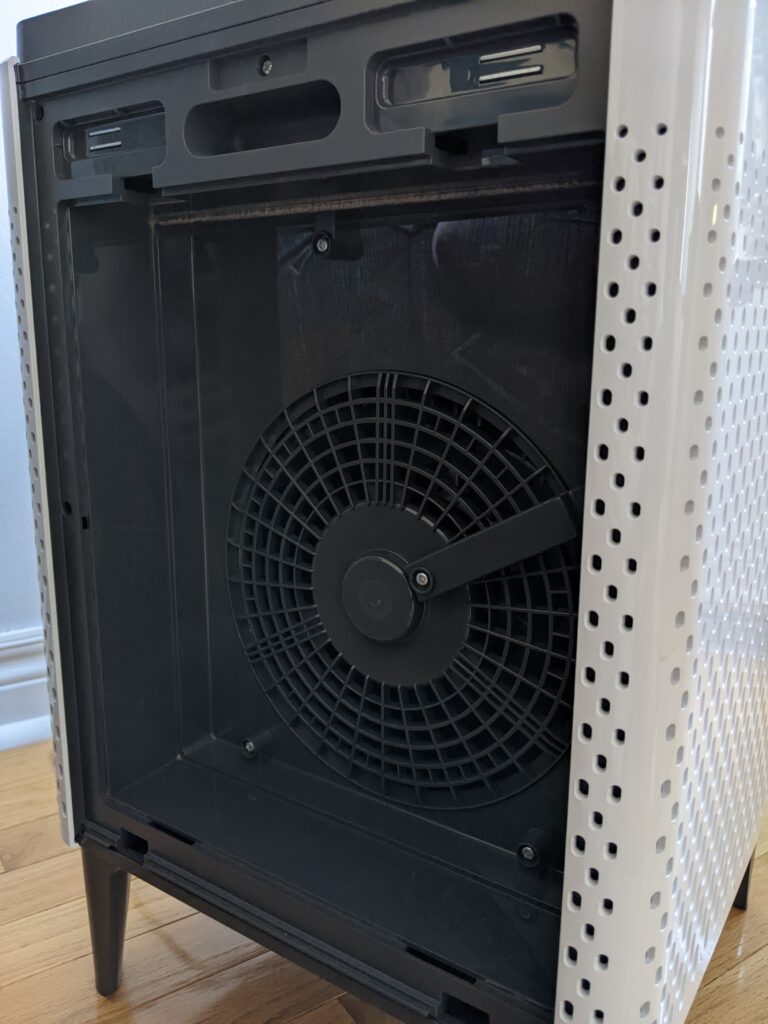
Air processing efficiency
To measure air processing efficiency for the Coway Airmega 300S, we calculate the CFM to power consumption (measured in watts), to come up with an index ratio at each of the purifier’s three speeds. At its lowest speed, the Airmega 300S has a CFM value of 104 and based on the power used, the ratio of CFM to watts is roughly 10:1. At the medium speed for the 300S the CFM value is 242 which results in a CFM to watts index ratio of 10.25:1. Finally, when operating at full speed the Airmega 300S processes 353 CFM and based on its power consumption yields an index ratio of 6.1:1.
These values indicate that the Airmega 300S is quite efficient versus other air purifiers in its class at higher speeds. At the lower speed values, there are other brands that are more efficient than the Airmega 300S and so we would suggest that in order to optimize usage of the Coway 300S it should be used in larger rooms over smaller rooms.
Noise
We measured the sound intensity of the Airmega 300S at its lowest and highest speeds. We found that the 300S had a measurement of 21 decibels at its lowest speed while the purifier produced a reading of just over 50 decibels. Our measurements were largely in line with the advertised rates put out by Coway’s marketing material. Put another way, when Airmega 300S is operating at maximum power, it’s as loud as a moderate rainfall.
Additionally, we also measured the CFM per decibel. The reason we take this measurement is to evaluate how loud a purifier is as it really begins to kick up its air processing capabilities at higher speed settings. The general consensus would suggest that the more stress on the motor, the louder it should become.
When analyzing CFM per decibel, it becomes clear how quiet the Airmega 300S is. For example, at its lowest speed, the 300S processes nearly 5 CFM per decibel while at its maximum speed, the purifier has a measurement of 7 CFM per decibel. These ratings put the 300S at levels comparable to ultra-quiet brands such as the Alen Breathesmart 75i.
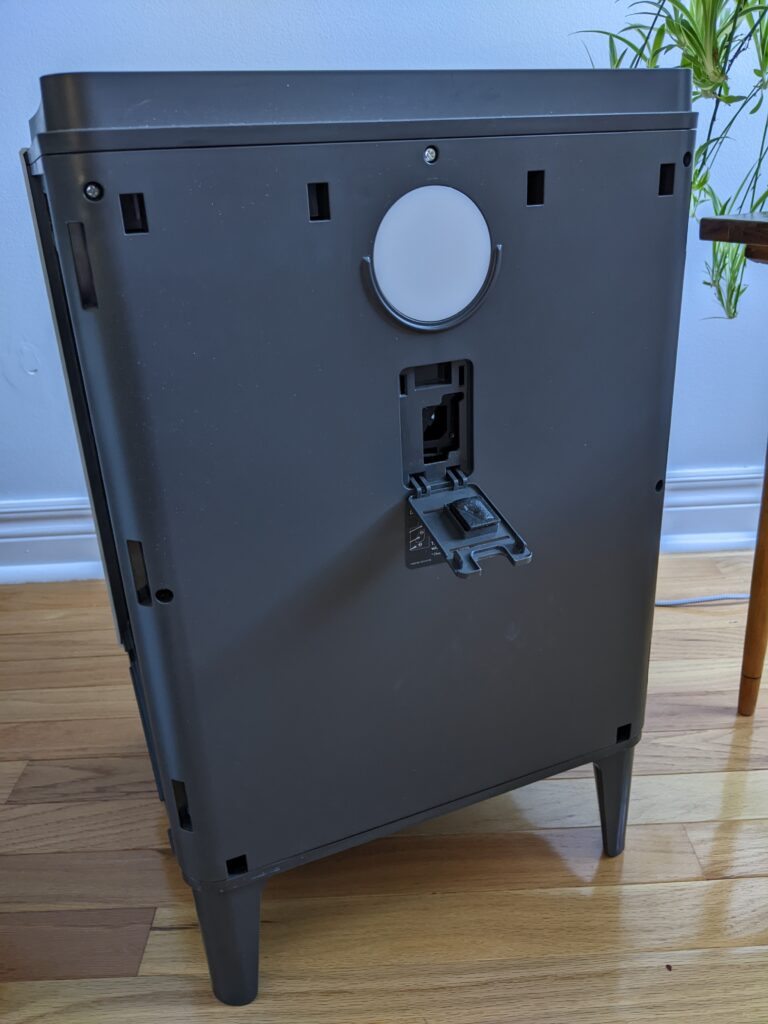
On device controls
The control panel is located on the top side of the purifier. On one side, there are status alerts indicating when to clean the pre-filter and Max2 filter. Additionally, there is an indicator related to Wi-fi connectivity and a light indicator which gives you the ability to turn off the air quality ring’s LEDs.
On the other side of the control panel is the on/off button as well as the buttons related to speed and power. Here too, you will find a button for the Smart and Sleep modes.
The Smart Mode adjusts the air speed of the air purifier according to the air quality around the unit. For example, if the air quality is deemed to be good, the 300S will keep the motor’s speed at its lowest setting. Likewise, if the air quality around the unit is unhealthy, the motor will ramp up to an appropriate level to clean the air. Also, if the pollution level remains low for more than 10 minutes, the fan will stop in order to conserve energy.
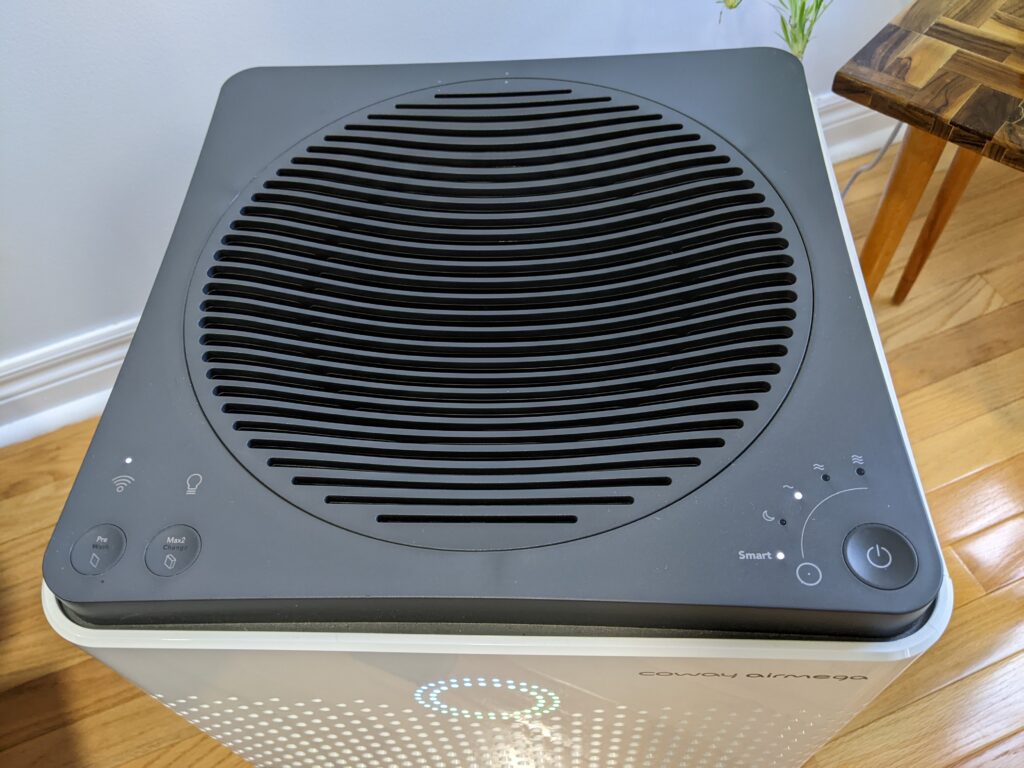
iOCare
Among the Airmega series, those air purifiers denoted with an ‘S’ in their names indicate that those purifiers utilize an app and can be voice controlled.
The app used by the Coway air purifiers is called iOCare. By accessing the app, you can visually inspect the current and historical air quality of your living space. Depending on your jurisdiction, you may also be able to access air quality readings for your city.
One of the expected features of the iOCare application is the ability to set a schedule for the purifier and it works well. A feature we especially like is the real time unhealthy air alerts sent to your phone.
Finally, in case you are wondering how to track the degradation of your air filters, not only can you do so through the control panel on the top of the unit, but the app will also keep track of when your pre-filter should be cleaned or when your Max2 combination filter needs to be replaced.

Value
Assessing the overall value of the Coway Airmega 300S requires an analysis of the purifier’s overall costs. These costs largely depend on two factors, the power consumed by the unit as well as the costs associated with replacing the Max2 combination filter.
To assess the overall annual costs of the Coway Airmega 300S air purifier, we have to make a few assumptions. First, we base our analysis on the unit being used at the highest speed for 24 hours per day, everyday, and consuming the stated 58 watts of power while doing so. Second, we take an average price of 10 cents per kWh although in some states and provinces this number may be different. Combining these numbers results in a cost of just over $4 per month or nearly $50 per year to actually use the air purifier.
As noted above, on top of operational costs, the Airmega 300S also requires an annual change of its Max2 combination filter which can range from $50-$150 depending on whether you purchase the replacement filter directly from Coway or through a third party.
As a result, the overall annual costs of owning and operating the Coway Airmega 300S at its maximum speed daily would be somewhere in the range of $50-$150 based on current prices.
Although these numbers are not trivial, the Coway 300S still rates favourably when compared to other air purifiers in its class, and therefore we rate its value favourably as well.
What we like
Air processing capacity: The ability to process over 350 CFM means that the 300S will be able to clean large areas quickly making it an option for both small and large rooms alike.
High quality filters: The pre-filter effectively captures large sized particles. Furthermore, the pre-filter can be cleaned and does not need to be replaced. The double-sided Max2 filter which uses a True HEPA H13 filter neutralizes smaller particles which are more difficult to capture.
Energy efficiency: At a maximum power draw of just under 60 watts, the Airmega 300S does an excellent job at processing air in a cost efficient manner. In fact, the Coway Airmega 300S is more efficient than the extremely popular Coway Mighty.
Noise: The 300S air purifier at its highest speed is very competitive with other high end units when it comes to noise. This is even more impressive when you consider how much air can be processed vs the decibel level of the unit when it’s running at its full speed.
Smart functionality: The app and voice control provide the user with added convenience and practical information with respect to air quality and maintenance of the unit.
What we don’t like
Pricing premium: The Airmega 300S is priced at a considerable premium to its non-smart counterpart, the Airmega 300. Although, we feel that there is a compelling reason to favour the 300S over the 300, we believe that the premium attached to the smart functionality is more than we would like to see.
Strategic cleaning: Given the premium attached to the Airmega 300S, it may be a better solution to utilize more than one lower priced air purifier to achieve similar CFM results.
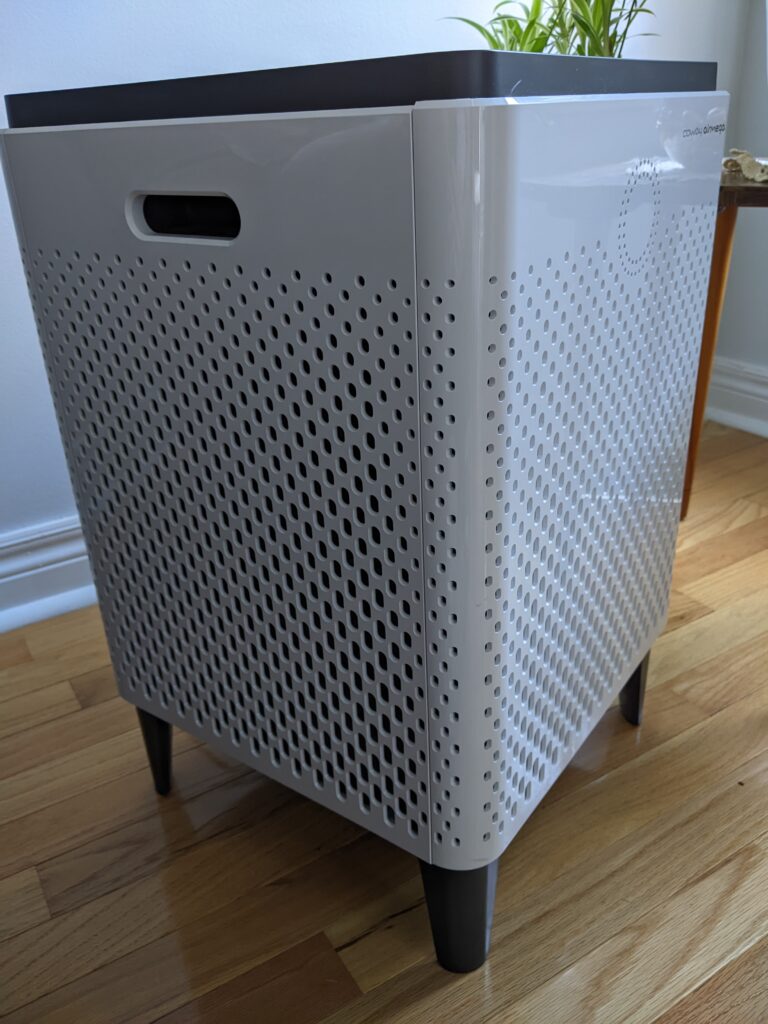
Final thoughts
We have had the ability to use and test the Coway Airmega 300S air purifier for several months and we have been impressed. The unit’s design is simple in nature but in terms of performance the 300S is both effective and efficient.
We tend to favour air purifiers that use carbon activated filters over fibrous materials that simply do not effectively neutralize gases and odors.
Furthermore, the amount of air that the 300S can process means that air is continuously being cleaned at a high rate and this can be especially helpful to those suffering allergies or asthma.
The iOCare app adds convenience to owning a unit such as the 300S. Having an app send you helpful reminders allows you to focus on other things and not worry about trying to guess when its time to clean the filters. There is enough to worry about daily, and your air purifier should not be one of them.
Finally, we like the fact that Coway provides a five year limited warranty which shows confidence in their product. More and more air purifiers that are coming to market tend to have warranties that do not match that of Coway.
It is for these reasons that we believe that the Coway Airmega 300S can be a useful addition to any home.
For information regarding current pricing and availability of the Coway Airmega 300S, please click on the button below.